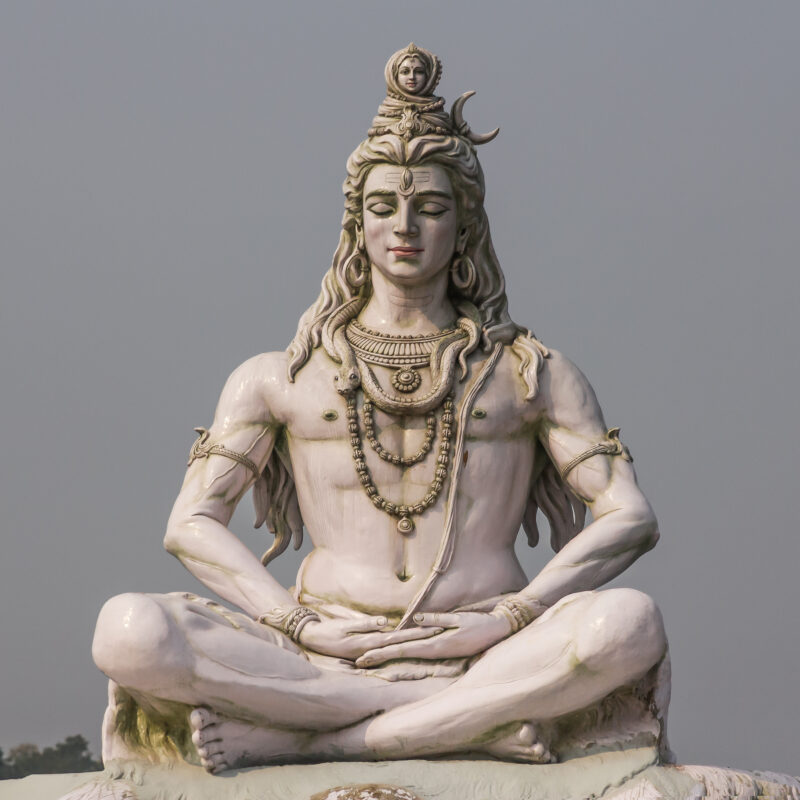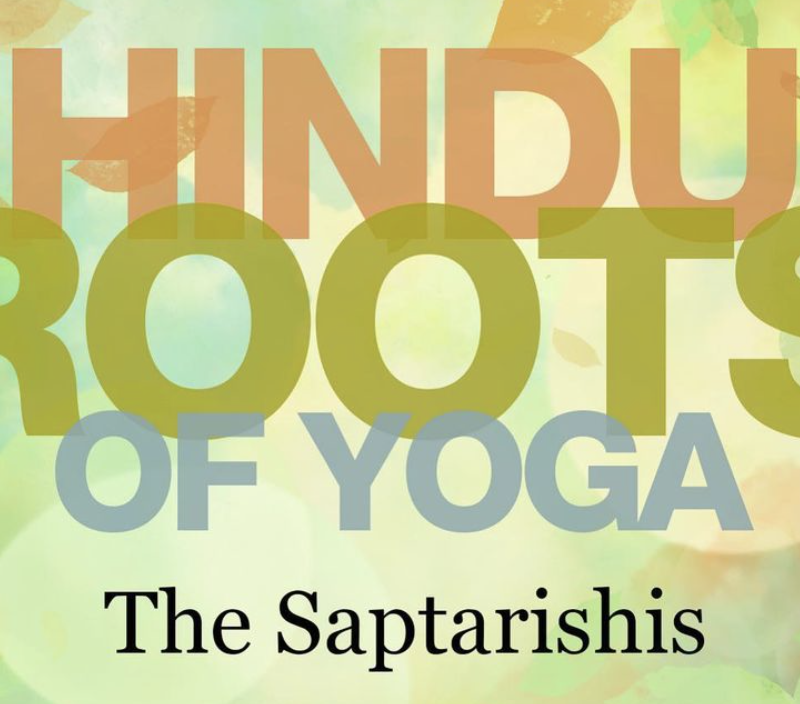

Sometimes Hindu worship, especially to those unfamiliar, can seem difficult to understand, filled with gods and goddesses of fantastical abilities, whose extraordinary deeds take the center of confusing stories.
The practice of such worship, however, while seemingly complex on the surface, really has many of its roots in something rather basic — something people of all backgrounds can connect to on some level, whether they consider themselves Hindu or not.
According to tradition, Hinduism’s earliest sages, who lived simple lives in the world’s mountains and forests, had a deep sense of appreciation for Earth’s natural gifts, without which none of us could survive. Filled with gratitude, a gratitude that demanded a form of expression, they became experts in devotional ceremonies, using various physical and mental techniques to convey their sincere feelings.
Perceiving Divinity’s presence in all of creation, they worshiped all of nature’s aspects as more than just matter. They revered them as personal deities. The River Ganga became known as a goddess of the same name, the Earth as Bhumi, the wind as Vayu, the ocean as Varuna, and fire as Agni.
The sun, especially honored for its role in the sustainment of all life, was worshiped using different names, depending on the qualities one wished to appreciate. Though there were many, the most common evolved into a set of 12 mantric sounds, used as part of a ritual called Surya Narayana Puja. They are:
- Mitra (“friend of all”)
- Ravaye (“one who is praised by all”)
- Surya (“guide of all”)
- Bhanave (“bestower of beauty”)
- Khagaye (“stimulator of the senses”)
- Pushne (“nourisher of life”)
- Hiranyagarbhaya (“promoter of virility”)
- Marichaye (“destroyer of disease”)
- Aditya (“inspirator of love”)
- Savitre (“begetter of life”)
- Arkaya (“inspirator of awe”)
- Bhaskara (“effulgent one”)
Performed at dawn while facing the sun and offering water in the deity’s honor, the practice calls for the sun to provide the strength, nobility, and dignity one needs to overcome life’s obstacles. Recognizing not only the spiritual benefits of the ritual, but also the physical ones, as the early morning rays indeed proved to have a nourishing effect on the body, the yogis of the time began experimenting with the core concepts of the Surya Narayana Puja, developing a practice that eventually came to be known as Surya Namaskar.
Known famously as “Sun Salutations,” Surya Namaskar is now one of the most globally recognized yoga practices. There are a number of variations, but the general sequence flows through a series of 12 postures as follows:
- Pranamasana (Prayer Pose)
- Urdhva Hastasana (Upward Salute)
- Uttanasana (Standing Forward Fold)
- Ashwa Sanchalanasana (Low Lunge)
- Chaturanga Dandasana (Plank Pose)
- Ashtanga Namaskar (Eight-limbed Salute)
- Bhujangasana (Cobra Pose)
- Adho Mukha Svanasana (Downward-facing Dog Pose)
- Ashwa Sanchalanasana (Low Lunge)
- Uttanasana (Standing Forward Fold)
- Urdhva Hastasana (Upward Salute)
- Pranamasana (Prayer Pose)
Engaging the mind, body, and spirit in a discipline that offers one’s entire being in gratitude to the sun, Surya Namaskar, on a fundamental level, is simply about connecting us to our natural roots, so we can learn to live in harmony with the world around us. Surya’s worship, along with many of Hinduism’s other gods and goddesses — despite centering on stories involving astonishing feats — is thus actually rather easy to understand, especially in regards to those who expressed sincere devotion to him.
To get a better idea, here are a few quick examples.
Rama
Of the many instances conveying Surya’s reciprocation with a devotee, The Ramayana, a Hindu epic that tells the story of a noble prince named Rama, details a moment that stands out as particularly notable.
The oldest of his father’s sons, Rama was meant to inherit the throne, but was instead exiled to the forest for 14 years by his jealous step-mother who wanted her own son to become emperor instead.
One day while Rama was living in the forest with his wife, Sita, and his younger brother Lakshman, both of whom had followed him into exile, a powerful demon named Ravana, overcome by Sita’s beauty, kidnapped her while the brothers were distracted. Realizing what had happened, the brothers tracked Sita to Ravana’s kingdom, where Rama engaged the demon in what turned into a long and arduous battle.
Observing the struggle from the heavens, a sage named Agastya, who noticed Rama’s exhaustion and wanted to help, descended to the prince during a break in the fight, and taught him a prayer known as Aditya Hridayam, which had the ability to invoke the sun’s power. Following the sage’s instructions, Rama, who is said to have come from a long line of kings descending from Surya himself, swiftly turned toward the sun with a natural affection, and began reciting the hymn.
Immediately experiencing a change in his mind and body, which became infused with Surya’s spiritual energy, Rama felt incredible strength and happiness. His fatigue gone, he thus took up his bow with renewed enthusiasm, and went on to slay Ravana.
Karna
In The Mahabharata, Hinduism’s other great epic, one can find the narration of another figure who displayed exceptional devotion to the sun deity, a warrior named Karna, born under astounding circumstances to a princess named Kunti.
As described in the text, Karna was conceived during Kunti’s teenage years, shortly after she was granted a boon by a sage named Durvasa, which enabled her to summon any celestial being she desired to see. Wanting to test the boon, she called upon Surya who, to her amazement, had indeed appeared in front of her. To her horror, however, she also learned the boon required whoever she summoned to give her a child. And so Surya left Kunti with a remarkable baby boy, who came into the world donning a natural golden armor and pair of earrings.
Scared of the potentially dire social consequences that could come upon an unmarried teenage mother, she put the baby in a basket and sent him floating down the river, hoping for the best. As it happened, the river carried him to a kingdom called Anga, where he was discovered by a couple who lovingly adopted and raised him as their own.
Unaware of his true origin, Karna grew into one of Earth’s mightiest warriors, joining the ranks of a king named Duryodhana, who ironically was the enemy of the five other sons (collectively known as the Pandavas) Kunti had later after she was married. When the conflict between the two parties was on the verge of war, Indra, the king of heaven who favored the Pandavas, knew Karna would be especially hard for them to defeat, as the celestial armor and earrings he was born with provided him supernatural protection. Hatching a plan, Indra decided he would disguise himself as a beggar and ask Karna to give up his armor and earrings in charity. If he approached him right after the warrior finished his morning sun prayers, surely he would agree, as Karna had famously promised to grant anything requested of him during that auspicious time of the day.
Surya, who wanted to protect his son after learning of Indra’s intention, spoke to Karna in a dream, and warned him not to fall for the dishonorable trick. From an early age, Karna had exhibited an innate affection for the sun god, diligently worshiping the deity on a daily basis. To meet him, even in his sleep, was therefore a huge honor. But the idea of breaking his vow was one he would simply not consider. It was a promise he made to the world, and he would rather die than experience the infamy of going back on his word.
Thus giving up his divine gifts when the time came, Karna went on to fight the Pandavas in a more vulnerable state, eventually dying in combat. Yet, to say he was a failure would be a grave offense to his life and story. Believed to have united with his father after death, his name became one of legend, respected by all for his love, strength, and integrity of character.
Yudisthira
Before the conflict between The Mahabharata’s two sides turned into war, Duryodhana, hoping to weaken the Pandavas’ powerful influence, had them exiled from society for 12 years, forcing them to live in the forest. Widely beloved due to their virtuous characters, however, many ascetics chose to follow them into exile, and provide them spiritual guidance and nourishment throughout their banishment.
Though Yudisthira, who was the oldest of the brothers, was delighted at having the ascetics’ company and counsel during what was a challenging time, he also couldn’t help but feel anxious. As a wealthy king in his city, he was always able to provide for his subjects. But in the forest he was materially poor, unable to look after those who would have normally depended on him. How, he therefore wondered, could he keep them comfortably fed?
Reflecting on Yudisthira’s anxiety, a sage named Dhaumya suggested he make an appeal to Surya, by whose potency all of the Earth’s food was produced. Hence heeding the sage’s advice, Yudisthira turned towards the sun, and spent the next three days offering numerous prayers to the deity, abstaining from food, water, and sleep all the while. Moved by the king’s determined sincerity, on the third day Surya appeared in front of the Pandava, and gave to him a large copper plate known as the Akshaya Patra, which had the ability to produce an inexhaustible supply of food, thereby solving Yudisthira’s predicament.
Named after this very plate, today’s largest NGO school meal program is called the Akshaya Patra Foundation. Providing hot, nutritious lunches to over 2 million children in 22,000 schools every day, the service it offers is a tribute to Surya himself, the energy from whom we all depend on, and should accordingly show immense gratitude towards.
Beholding Sri Rama, standing absorbed in deep thought on the battlefield, exhausted by the fight and facing Ravana, who was duly prepared for the war, the glorious sage Agastya, who had come in the company of gods to witness the encounter (battle), now spoke to Rama as follows:
Oh Rama, oh mighty armed elegant Rama, listen carefully to the eternal secret by which, oh my child, you shall conquer all your enemies on the battlefield and win against your adversaries.
By chanting the Aditya Hridayam (the meditation of sun in the heart), which is very auspicious and highly beneficial, you will be victorious in battle. This holy hymn dedicated to the sun god will result in destroying all enemies and bring you victory and permanent happiness.
This supreme prayer is the best amongst auspicious verses. It will destroy all sins, dispel all doubts, alleviate worry and sorrow, anxiety and anguish, and increase the longevity of life. It is a guarantee of complete prosperity.
Worship the sun god, the ruler of the worlds and lord of the universe, who is crowned with effulgent rays, who appears at the horizon and brings light, who is revered by the denizens of heaven (devas) and asuras alike.
Indeed, he is the very embodiment of all gods. He is self-luminous and sustains all with his rays. He nourishes and energizes the inhabitants of all the worlds as well as the host of gods and demons by his rays.
He is Brahma (the creator), Vishnu (the sustainer), Shiva (the transformer), Skanda (the son of Shiva), Prajapati (the progenitor of the human race), the mighty Indra (king of heaven), Kuvera (the god of wealth and lord of riches), Kala (eternal time), Yama (the lord of death), Soma (the moon god that nourishes), and Varuna (the lord of the sea and ocean).
Indeed, he is Pitris (the ancestors), the eight Vasus, the Sadhyas, the twin Aswins (the physicians of the gods), the Maruts, the Manu, Vayu (the wind god), Agni (the fire god), Prana (the life breath of all beings), the maker of six seasons, and the giver of light.
He is the son of Aditi (the mother of creation), the sun god who transverses the heavens. He is of brilliant golden color, the possessor of a myriad rays. By illuminating all directions he is the maker of daylight. He is the all pervading, shining principle, the dispeller of darkness, exhibiting beautiful sight with a golden hue.
He has seven horses yoked to his chariot, shining with brilliant light and infinite rays. He is the destroyer of darkness, the giver of happiness and prosperity, mitigator of sufferings and is the infuser of life. He is the omnipresent one who pervades all with an immeasurable amount of rays.
He is Hiranyagarbha, born of Aditi of a golden womb. He is Sisirastapana, the destroyer of the cold, snow and fog. He is the illuminator, bearer of the fire and conch. He is the remover of ignorance and giver of fame.
He is the Lord of the firmament and ruler of the sky, the remover of darkness, and the master of the Vedas. He is a friend of the waters (Varuna) and causes abundant rain. He swiftly courses in the direction south of the Vindhya mountains and sports in the Brahma Nadi.
He, whose form is circular and is colored in yellow and red hues, is intensely brilliant and energetic. He is a giver of heat, the cause of all work, of life, and death. He is the destroyer of all and is the omniscient one sustaining the universe and all action.
He is the lord of the constellations, stars, and planets, and the origin of everything in the universe. Salutations to Aditya, who appears in 12 forms (in the shape of 12 months of the year) and whose glory is described in his 12 names.
Salutations to the lord of sunrise and sunset, who rises at the eastern mountains and sets in the western mountains. Salutations to the lord of the stellar bodies and to the lord of daylight.
Oh! Lord of thousand rays, son of Aditi, salutations to you, the bestower of victory, auspiciousness, and prosperity. Salutations to the one who has colored horses to carry him.
Salutations to Martandaya, the son of Mrukanda Maharisi, the terrible and fierce one, the mighty hero, the one that travels fast. Salutations to the one whose appearance makes the lotus blossom (also the awakener of the lotus in the heart).
Salutations to the lord of Brahma, Shiva and Vishnu. Salutations to Surya, the sun god, who (by his power and effulgence) is both the illuminator and devourer of all, and is of a form that is fierce like Rudra.
Salutations to the dispeller of darkness, the destroyer of cold, fog and snow, the exterminator of foes. The one whose extent is immeasurable. Salutations also to the annihilator of the ungrateful and to the lord of all the stellar bodies, who is the first amongst all the lights of the universe.
Salutations to the lord shining like molten gold, destroying darkness, who is the transcendental fire of supreme knowledge, who destroys the darkness of ignorance, and who is the cosmic witness of all merits and demerits of the denizens who inhabit the universe. Salutations to Vishvakarma, the architect of the universe, the cause of all activity and creation in the world.
Salutations to the lord who creates heat by his brilliant rays. He alone creates, sustains, and destroys all that has come into being. Salutations to him, who by his rays consumes the waters, heats them up, and sends them down as rain again.
Salutations to the lord who abides in the heart of all beings, keeping awake when they are asleep. Verily he is the agnihotra, the sacrificial fire and the fruit gained by the worshipper of the agnihotra.
The sun god (Ravi) is the origin and protector of the Vedas, the sacrifices mentioned in them, and the fruits obtained by performing the sacrifices. He is the lord of all action in this universe and decides the universal path.
Listen Oh Rama! Oh Raghava, scion of the Raghu dynasty, any person singing the glories of Surya in great difficulties during affliction, while lost in the wilderness, and when beset with fear, will not come to grief (or lose heart).
If you worship this lord of the universe, the god of all gods, with a concentrated mind and devotion by reciting this hymn (Aditya Hridayam) thrice, you will emerge victorious in the battle.
Oh mighty armed one, you shall triumph over Ravana this very moment. After blessing lord Rama thus, and predicting that he would slay (the demon) Ravana, sage Agastya took leave and returned to his original place.
Having heard this, that great warrior Raghava, feeling greatly delighted, became free from grief. His clouds of worry thus dispelled, the lustrous Lord Rama obeyed the sayings of Sage Agastya with great happiness. With a composed mind he retained this hymn in his memory, ready to chant the Aditya Hridayam.
Having performed Achamanam (sipping water thrice) and being purified, Rama, gazing at the sun with devotion, recited the hymn Aditya Hridayam thrice. Then that great hero was thrilled and lifted his bow.
Lord Rama thus cheered, seeing Ravana coming to fight, put forth all his effort with a determination to kill him.
Then knowing that the destruction of Ravana was near, the sun god, surrounded by all the gods in heaven, looked at Rama with a delighted mind and exclaimed, “Hurry up, be quick.”
If you enjoyed this piece, then you may also be interested in reading “The Hindu roots of yoga: The Saptarishis”
Aditya Hridayam povided by Harekrsna.de











































